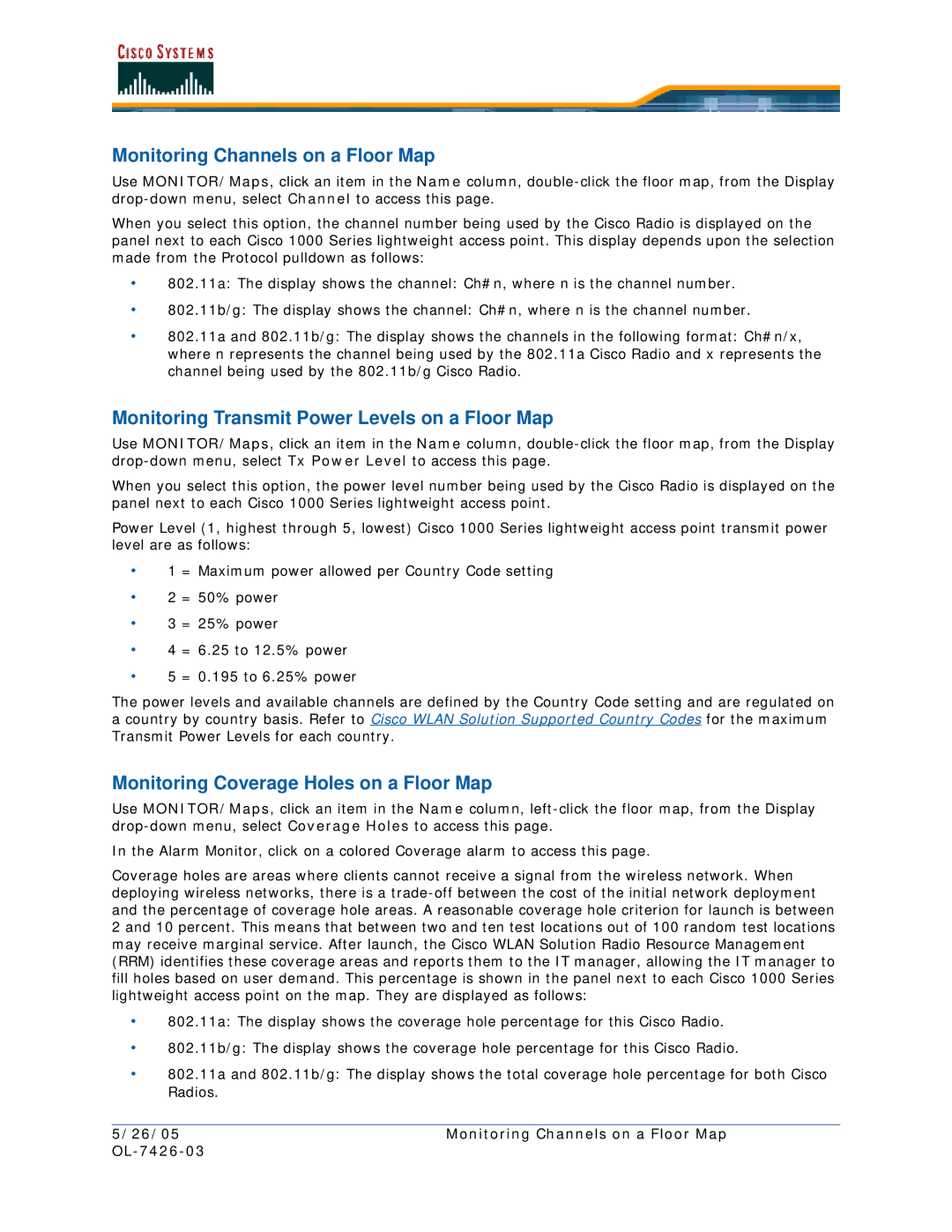
Monitoring Channels on a Floor Map
Use MONITOR/Maps, click an item in the Name column,
When you select this option, the channel number being used by the Cisco Radio is displayed on the panel next to each Cisco 1000 Series lightweight access point. This display depends upon the selection made from the Protocol pulldown as follows:
•802.11a: The display shows the channel: Ch#n, where n is the channel number.
•802.11b/g: The display shows the channel: Ch#n, where n is the channel number.
•802.11a and 802.11b/g: The display shows the channels in the following format: Ch#n/x, where n represents the channel being used by the 802.11a Cisco Radio and x represents the channel being used by the 802.11b/g Cisco Radio.
Monitoring Transmit Power Levels on a Floor Map
Use MONITOR/Maps, click an item in the Name column,
When you select this option, the power level number being used by the Cisco Radio is displayed on the panel next to each Cisco 1000 Series lightweight access point.
Power Level (1, highest through 5, lowest) Cisco 1000 Series lightweight access point transmit power level are as follows:
•1 = Maximum power allowed per Country Code setting
•2 = 50% power
•3 = 25% power
•4 = 6.25 to 12.5% power
•5 = 0.195 to 6.25% power
The power levels and available channels are defined by the Country Code setting and are regulated on a country by country basis. Refer to Cisco WLAN Solution Supported Country Codes for the maximum Transmit Power Levels for each country.
Monitoring Coverage Holes on a Floor Map
Use MONITOR/Maps, click an item in the Name column,
In the Alarm Monitor, click on a colored Coverage alarm to access this page.
Coverage holes are areas where clients cannot receive a signal from the wireless network. When deploying wireless networks, there is a
•802.11a: The display shows the coverage hole percentage for this Cisco Radio.
•802.11b/g: The display shows the coverage hole percentage for this Cisco Radio.
•802.11a and 802.11b/g: The display shows the total coverage hole percentage for both Cisco Radios.
5/26/05 | Monitoring Channels on a Floor Map |
|
|
